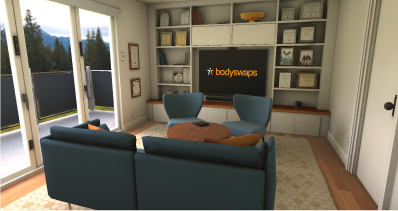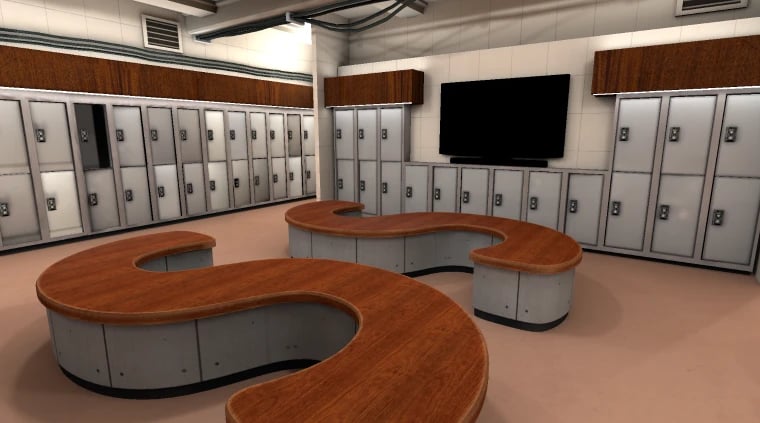Let’s Talk About Race:
Navigating Microaggressions
Tutor Notes
Overt racism is easy to spot. But microaggressions - subtle everyday slights, snubs and insults - are often invisible to anyone who hasn't been on the receiving end themselves.
This simulation shines a spotlight on some of the microaggressions that marginalised and underrepresented people experience every day and empowers learners with strategies for responding to microaggressions when they see them.
This simulation has been co-developed in collaboration with subject matter experts from George Brown College.
Before reviewing this document, we strongly encourage tutors to complete the activities in Navigating Microaggressions for themselves.
About this resource
Key learner outcome and goals
Learning Outcome
Recognize and challenge microaggressions
Learning Goals
- Reflect on your attitude towards microaggressions
- Uncover hidden microaggressions
- Call out microaggressions where you see them
- Help others to recognize the harmful impact of their microaggressions
A word about terminology
As a medium, Virtual Reality is not best suited to didactic teaching methods.
However, our intention is that all Bodyswaps modules follow a student-centred constructivist pedagogy. This means creating rich experiences in which learners can explore key concepts and ideas and reach their own conclusions.
This is why our documents speak in terms of learning goals and outcomes, rather than measurable ‘learning objectives’ (a la Bloom’s Taxonomy) per se.
Module structure
Navigating Microaggressions is comprised of five topics, plus ancillary activities such as onboarding, self-reflection, and the exit survey.
It is a linear experience, meaning the learner will be guided step by step through all the activities by the coaches.
We recommend that learners fully interact with each activity to get the maximum benefit. It is estimated that the complete module will take the learner approximately 25 minutes to complete, although completion times vary depending on whether the learner chooses to repeat topics to explore different options (encouraged) or fine-tune their freeform responses.
Learner Journey
.svg)
.svg)
.svg)
observation
.svg)
- Scaffolded conversation
- Freefrom
.svg)
.svg)
.svg)
Characters
.webp?width=720&height=1050&name=nola%20(1).webp)
.webp?width=720&height=1050&name=abeeku%20(1).webp)
Abeeku
Virtual Coach.webp?width=720&height=1050&name=alice%20(2).webp)
Alice
.webp?width=720&height=1050&name=shayla%20(4).webp)
Shayla
Learning Environments

Tutor Room - Bodyswaps HQ

Locker area
Purpose
Familiarise learners with the controls and navigation
Location
Characters
N/A
Duration
1:00
The first time learners use Bodyswaps, this onboarding sequence familiarises them with the features of the app, takes them through an avatar selection and embodiment activity, and prepares them for the experience to come.
During the induction, learners will:
- Find out how this training is different from the rest
- Select their avatar
- Discover their virtual journal
- Learn how to navigate and use the tools and settings
If the learner has already completed the induction during an earlier session and has logged on using the same credentials, they will go directly to the module introduction.
Purpose
Introduce the module and reflect on current confidence levels before beginning the activities
Location
Tutor room
Characters
Abeeku and Nola
Journal
Duration
The module begins with an introduction from the coaches, who discuss how, over a lifetime, these casual slights and insulting comments really build up!
The coaches then introduce the themes that will be addressed within the module and invite the learner to complete a short likert-style self-reflection survey to indicate how confident they feel about the following key learning points:
- Reflecting on your attitude towards microaggressions
- Identifying microaggressions
- Using strategies to respond to microaggressions
- Challenging others to reflect on their microaggressions
These self-reflection questions will be repeated in the debrief at the end, to assess how the learner’s confidence levels have changed.
Note: If you wish to receive data about how the learner’s confidence levels have changed as a consequence of the training, it’s important that they complete this introduction and the debrief at the end.
Purpose
Help learners to reflect on their personal reaction to microaggressions
Location
Tutor room
Characters
Nola and Abeeku
Journal
Duration
To help learners to think about how microaggressions make them feel, Nola and Abeeku describe six scenarios and ask the learner to select a reaction to each that most closely matches their own. The scenarios are:
- Someone new has just joined your team at the coffee shop where you work. The barista training her says, "My friend applied for this job too. The boss must have given it to you because you people always look out for each other."
- Your classmate returns after a day away. Someone greets him with, "Another religious holiday? How do you ever get any work done?"
- A classmate asks your Asian friend to tutor him for his maths exam because, “They just know math. Am I right?”
- You’re discussing your dream to start your own company after college and your dad says,”If you partner with an immigrant you can get one of those new business loans they’re always getting."
- You've been out at a nightclub with your girlfriend. As you leave, she says, ‘Black people have such great rhythm, don’t ya think?”
- You're in the library studying with a friend when someone stops by your table and whispers to her, "Hey, Anna, you're Latina. Can you recommend a good Mexican place?"
Gentle (non-confrontational) feedback at the end of the quiz is tailored to reflect whether the learner is largely unaware, willing but hesitant to get involved, or ready to step in and call out the microaggression and highlights how this training will benefit them the most.
Purpose
Introduce learners to multiple examples of microaggressions
Location
Tutor room
Characters
Abeeku and Nola
Journal
Duration
Microaggressions are often invisible to those who are not on the receiving end. Remarks and behaviours that the learner may consider minor - even trivial - become amplified when they are a constant part of the daily experience for the affected person. This dual category observation activity holds up a mirror to the blind spots around our biases and helps reveal microaggressions that we’re often not even aware of.
The activity is introduced by Abeeku and Nola, who highlight the differences between microinsults (subtle rudeness and demeaning insensitivities) and microinvalidation (excluding, negating and nullifying thoughts, feelings or experiences).
The learner then transitions to the locker area where they listen to an uncomfortable conversation between two friends - Alice and Shayla - in which Alice is recounting a disagreement she had with another student, Adeel. Their task - to click or tap to indicate instances of microinsults and microinvalidations, including:
Visual feedback is provided in real time to indicate if the learner has correctly identified a microaggression.
|
|
Visual feedback is provided in real time to indicate if the learner has correctly identified a microaggression.
Summary feedback is supplied at the end of the conversation, with a panel of buttons indicating which events were identified. Clicking on a button rewinds the animation to the corresponding instance and provides additional text information about its significance.
Purpose
Give learners a strategy for responding to microaggressions
Location
Tutor room / Locker room
Characters
Abeeku, Nola, and Alice
Journal
Duration
3:00
In this next activity, Nola and Abeeku introduce the learner to an effective strategy for challenging another person’s microaggressions:
- Disarm - be empathetic
- Withhold judgement - focus on the microaggression, not the perpetrator
- Use I statements - speak only for yourself
- Raise awareness - compassionately educate perpetrators when possible
- Challenge misperceptions - keep discussions open and unambiguous, stick to the facts and keep challenging the perpetrator’s misperceptions
The learner then returns to the locker area to see what happens when they apply the strategy in a scaffolded conversation with Alice. Here, the learner chooses what to say from three given options. Each option elicits a different response from Alice and a pop-up containing additional information, if required, about why it was or wasn’t the best option.
If the learner selects an inappropriate option, after receiving feedback, they get to try again. This repeats until the learner selects the best option. There is no penalty for selecting an inappropriate response. Instead, learners are encouraged to experiment and perhaps voice internally held opinions that they usually suppress for fear of reprisals in order to see what the outcome might be.
Purpose
Tutor room / Locker area
Location
Geoffrey and Mabel’s living room, then Tutor room
Characters
Abeeku, Nola and Alice
Journal
N/A
Duration
To complete the training, the learner is now encouraged to try using the strategy - speaking in their own words - to help Alice understand why she was wrong to tell Adeel that he was lucky to have a diversity scholarship.
While they speak, the learner is guided by hints displayed on a screen in the locker area. Their performance is recorded and the learner then bodyswaps with Alice to see how their words felt from her perspective.
Various verbal and non-verbal aspects of the learner’s performance is analysed during their performance, including their use of eye contact and key words and phrases that might indicate the learner’s appropriate application of the strategy:
- Disarming
- Withholding judgement
- Using I statements
- Raising awareness
- Challenging misperceptions
Feedback on these is provided after the bodyswap playback is complete to give highly personalised guidance.
Purpose
Debrief the learner upon completion of the training and prompt self-reflection
Location
Tutor room
Characters
Nola and Abeeku
Journal
Duration
The coaches congratulate the learner on completing the Navigating Microaggressions training.
Learners are then invited to repeat the likert survey from the beginning of the activity, to encourage them to reflect and self-report on how their confidence levels have changed following completion of the training with respect to:
- Reflecting on their personal reaction to microaggressions
- Identifying microaggressions
- Using strategies to respond to microaggressions
- Challenging others to reflect on the harmful impact of their microaggressions
Purpose
Assess the effectiveness of the training itself
Location
N/A
Characters
N/A
Journal
Duration
Before the learner leaves the module, they are asked to complete a short survey about their experience.
This survey is not compulsory, but the data helps us to assess the effectiveness of our product and identify any areas that need improvement. Clients also find it beneficial when assessing ROI.
They are asked to mark whether they agree or disagree with the following statements, on a 10 point scale:
- I would recommend this experience to others
- The experience helped me identify elements I could improve upon
- I have a better understanding of how to recognise and challenge microaggressions
